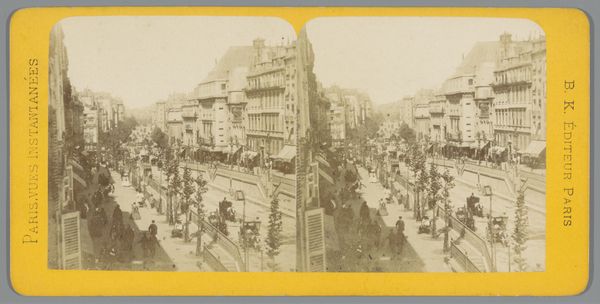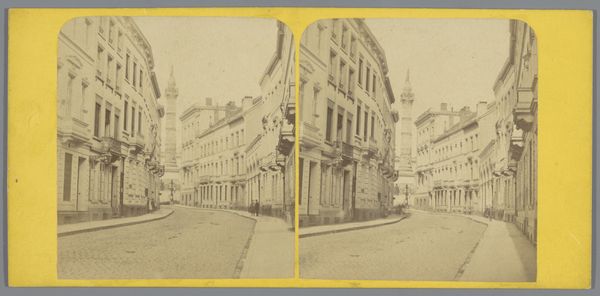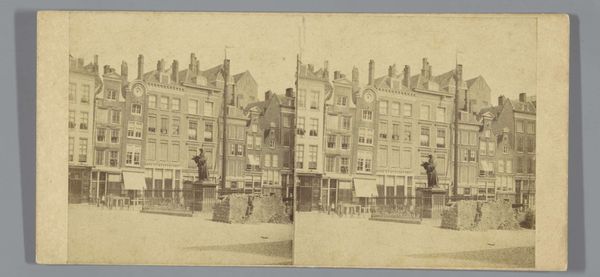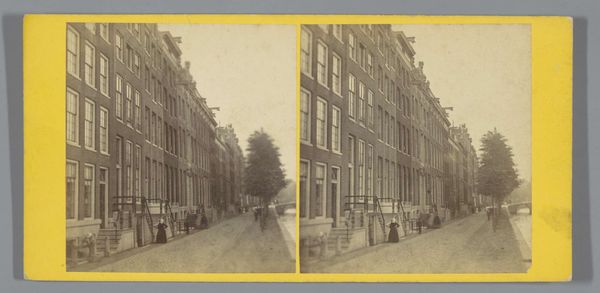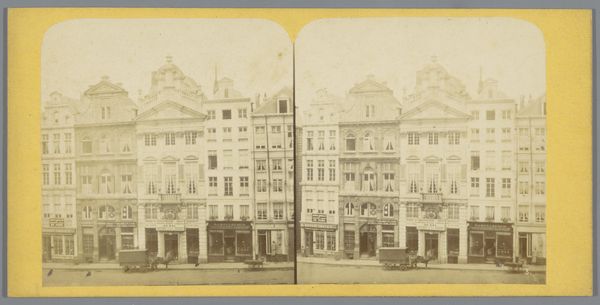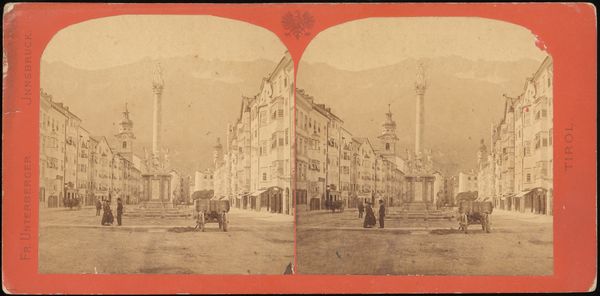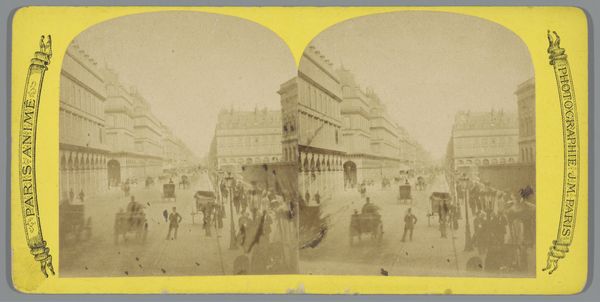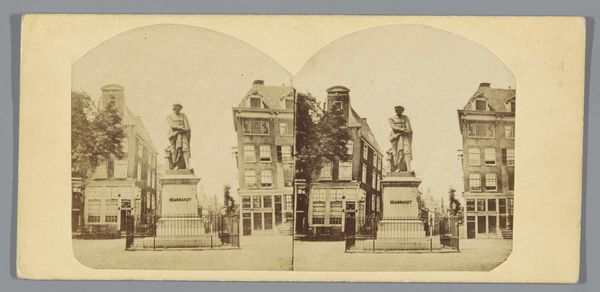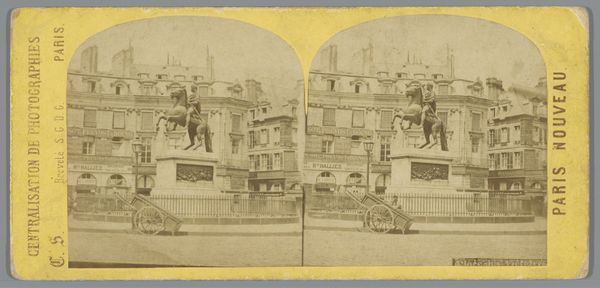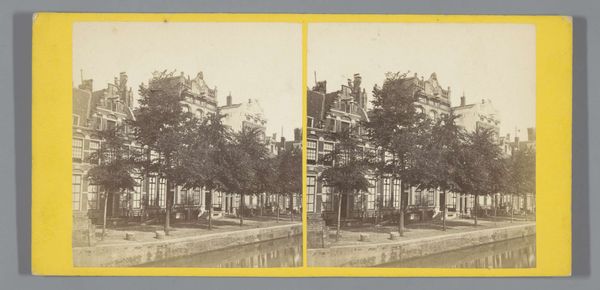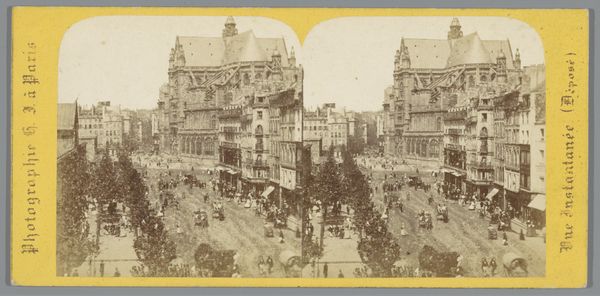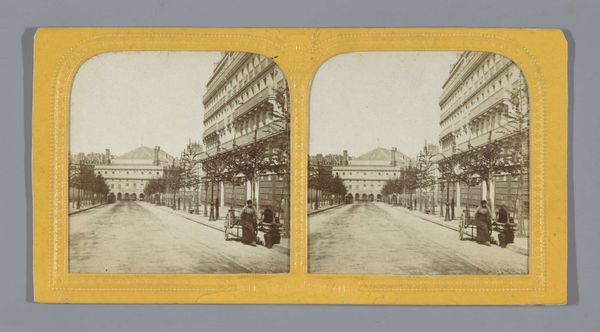
photography, gelatin-silver-print
#
dutch-golden-age
#
street-photography
#
photography
#
gelatin-silver-print
#
cityscape
#
genre-painting
#
realism
Dimensions: height 81 mm, width 169 mm
Copyright: Rijks Museum: Open Domain
Editor: This is "De Warmoesgracht te Amsterdam met passanten," an anonymous gelatin silver print from around 1865-1870. It feels very staged to me, like a tableau vivant. What’s your take on this scene? Curator: I see a crucial commentary on the rapidly changing urban landscape and social dynamics of 19th-century Amsterdam. While seemingly a simple street scene, consider it through the lens of industrialization and emerging class structures. Editor: Class structures? Curator: Exactly. Who are these figures, what might their attire signify, and how does their placement within the frame reflect social hierarchies? Photography, still a relatively new medium, becomes a tool for documenting and perhaps even subtly critiquing the burgeoning capitalist society. Editor: I guess I was just seeing a pretty picture, but now I notice the repetition of the buildings. Is that related? Curator: Repetition speaks to standardization, a hallmark of industrial production and its impact on architecture. Think about how urban planning was influenced by the needs of commerce and the displacement that often accompanied it. Does this photograph glorify progress or subtly reveal its costs? Consider also the absence of women - who dictates whose stories are preserved? Editor: So the photo’s subjects, or even its creator, might be completely unaware of the social forces at play? Curator: Consciously aware or not, art is never created in a vacuum. Examining its historical context helps us to understand its implicit biases and broader cultural significance. Editor: Wow, I'm looking at this photograph in a totally different way now. Thanks for highlighting those important layers! Curator: Precisely. By understanding those contextual influences, we have the opportunity to understand more about social change through art.
Comments
No comments
Be the first to comment and join the conversation on the ultimate creative platform.


